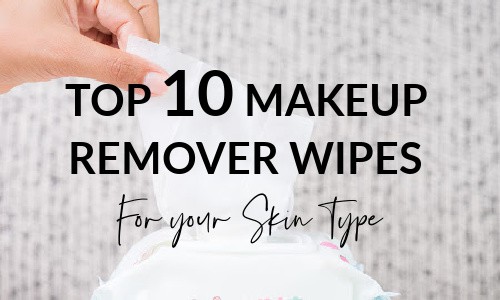It’s no secret that most of us are pretty sloppy about cleaning our makeup regularly. We are perhaps more diligent about cleaning the brushes and tools we use on our faces. Some of us may have occasionally wiped down makeup containers and bags, at least when the pandemic was at its height!
So what about the very many creams, powders, and face palettes that – believe it or not – are breeding grounds for nasty germs and superbugs? You probably never really thought about sanitizing makeup products (unless you’re a makeup professional). But we are here to talk to you all about that, specifically about cleaning your eyeshadow palettes.
Not just that, though. We’ll tell you why you need to sanitize your eyeshadows and teach you the easiest and quickest ways to clean and disinfect your products. You’ll find plenty to learn here and possibly pick some handy tips to cleanse your eyeshadow palette efficiently – whether you’re a beginner, a makeup enthusiast, or even an experienced professional.
This post may contain affiliate links. That means if you click and buy, I may receive a small commission (at zero cost to you). Please see my full disclosure policy for details.
How do you disinfect an eye shadow palette?
Disinfecting any makeup product involves destroying the microorganisms that reside on its surface. There are different methods that aestheticians, makeup artists, and beauty professionals follow to get their tools clean. The frequency of disinfection can vary depending on the number of people sharing a product.
1. Disinfecting with alcohol

This would be the simplest go-to method for most of us. With a few handy products like isopropyl alcohol, rubbing alcohol or surgical spirit, wipes, and Q-tips, you can get your makeup palette looking spick and span.
Alcohol works by denaturing the proteins and dissolving the germs’ lipid membrane, which causes dehydration and eventually kills them. But not all alcohol works well against germs. Contrary to popular belief, a higher concentration of alcohol like 99% isopropyl alcohol is less effective when compared to a diluted 70% isopropyl alcohol.
For sanitizing beauty products, spraying them with 70% isopropyl alcohol like this one will enable the liquid to penetrate the layers of makeup to destroy the bugs, dry quickly, and at the same time leave the original formulations unaffected.
2. Using a commercial cleanser

Using a commercial makeup disinfectant – A professional makeup cleanser isn’t too different from a homemade alcohol spray solution. The formulation is specially created for makeup products and helps take the guesswork out of the disinfection process. Along with alcohol, they come in custom formulas – including vegan, cruelty-free, and fragrance-free choices.
3. Using UV sanitizer

Sanitization using UV rays is not exactly a new science. UV technology has been used by hospitals and industries for years now, but the pandemic has seen an emergence of UV sanitizers, even handheld ones, for home and personal use.
UV rays are considered quite efficient in eliminating most microorganisms without the need for harsh chemicals or additives. Germicidal UV rays or UV-C spectrum use wavelengths between 200-280 nm for disinfection and remain safe for your eyes and skin.
Portable UV sanitizers can be an effective solution to destroy the germs and even superbugs present in your eyeshadow palette while ensuring the product remains unaffected. The downside – they do not come cheap, especially when compared to a simple alcohol solution.
How to Clean and Sanitize Eyeshadows? (powders singles, creams, and palettes)
If the sordid idea of putting dirty makeup in your eyes puts you off(as it should), we’re here to tell you that getting them clean and sanitary is a piece of cake! You only need a few seconds of your time and some easily accessible cleaning products to get your eye shadow palette gleaming bright and germ-free.
What you need:
- Hand sanitizer/ soap
- 70% Isopropyl alcohol or professional makeup sanitizer
- Spray bottle (I liked the design of these ones!)
- Q-tips
- Disinfectant wipes/ alcohol-soaked towelettes (I recommend this bundle)
Step 1. Disinfect your hands first
Start by making sure your hands are clean. Washing your hands thoroughly with soap is the best way to ensure they’re squeaky clean. If not, apply hand sanitizer.
Step 2. Prepare your sanitizer
Fill up a spray bottle with your choice of sanitizer liquid.
Step 3. Spray your makeup palettes or compacts
Lightly spray your eyeshadow powders or creams with this alcohol spray. You can even spray on the entire makeup container. After a few seconds, wipe off the excess liquid.
Step 4. Clean the edges with a small disposable cotton
Use an alcohol-soaked Q-tip to clean around the edges and grooves of the eyeshadow tray and lid.
Step 5. Wipe it out
With a disinfectant wipe/ wet towelette, wipe the entire package – inside and out – until fully clean.
Step 6. Let it dry
Let it sit for a while until dry. Once fully dry, your eyeshadows are ready for use again!
This method works not just for eyeshadow palettes but also for eyeshadow creams, crayons, and single powders. With eye shadow crayons, sticks, and creams, you can go the extra mile by scraping off a thin layer of product and spray-cleaning the remainder.
How can you sanitize eyeshadows between clients?
If you are a professional makeup artist, you know that along with makeup skills, hygiene plays a big part in ensuring your clients stay beautiful and healthy too. When putting on makeup for a larger group of people – like bridesmaids at a wedding or backstage during a fashion show – makeup artists often worry about maintaining hygiene standards when busy and pressed for time.
While an elaborate disinfection process is impossible to do, here are a few tips that can help you minimize the transfer of microbes between multiple clients even while working in a fast-paced environment.
Tip #1
Sanitize your hands before touching the client’s face, especially exposure-prone areas like eyes and lips.
Tip #2
Use disposable tools like Q-tips, eyeshadow applicators, and mascara wands to pick up eyeshadows and makeup, which will help keep them clean for a longer time.
Tip #3
With a spatula, scrape tiny quantities of cream eyeshadows onto a palette and use that on clients instead of double-dipping into the original container.
Tip #4
Carry a concentrated alcohol spray and spritz it on eye shadows and creams between clients.
Tip #5
Alternatively, you can even use alcohol wipes to clean the eyeshadows when there isn’t enough time.
Tip #6
Clean your makeup bag, tools, and cosmetics thoroughly after each event.
These are just a few manageable hacks that can help you keep your makeup products intact while ensuring the client’s health is uncompromised. Maintaining a hygiene routine is vital for a professional artist, particularly in the current climate.
Why should you sanitize eyeshadow palettes?
You might not see it, but most surfaces you come in contact with are likely to be covered in germs. And it’s no different when it comes to makeup products. While not all microbes are harmful, some are potent enough to cause infectious diseases that could even be life-threatening!
A 2019 UK-based study investigating microbial contamination in certain makeup products (including lipsticks, mascaras, and sponges) found harmful bacteria like E.coli, Staphylococcus aureus, and others on nearly 79-90% of used makeup. Your eyeshadow palette may look pristine, but if it has been used and never cleansed, you can be sure that germs are thriving on the surface.
what happens if you go ahead and use an Unsanitized eye shadow anyway?
Luckily, a lot of makeup nowadays comes with anti-bacterial properties. But that’s not likely to last past the expiry date on the package. And older eye makeup, even those unused for a while, can be prone to breaking down and thus lead to more breeding of germs.
If you get contaminated makeup inside your eye, it could result in something mild like irritation and redness. Or it could lead to conjunctivitis and eye infection, which, in severe cases, can even lead to permanent blindness. You can prevent the spread of illness by disinfecting your eyeshadow palettes before sharing them with others or – if you’re a makeup artist- before using them on multiple clients.
Does disinfecting ruin eyeshadow?
When using 70% Isopropyl solution, be careful not to use so much that your palette is almost drenched in liquid. Too much alcohol can change the constitution and quality of the eyeshadow, take longer to dry, and even cause damage to the palette box. Using a high concentration of alcohol(like 99%) is ineffective too. It dries off fast and leaves a film on top of the eyeshadow. It does not permeate through to destroy the germs within the product.
As with anything, moderation is key. The same holds for alcohol used in makeup disinfection. While using alcohol is a sure-shot way of getting rid of the surface germs, incorrect usage can ruin your eyeshadows and creams.
Final Thoughts on How to Clean and Sanitize your Eyeshadow Palettes
Cleaning and disinfecting eyeshadow palettes might seem like a chore. But now more than ever, we have realized how important it is to maintain a sterile, sanitary environment. If you are a professional in the beauty industry or share your makeup with many people, the best hygiene practices will ensure that your clients remain safe, satisfied, and even grateful for your efforts.
The rest of us can breathe more freely. Unless you’re sharing your makeup or using expired/old makeup well past its best-by date, you aren’t likely to be exposed to dangerous bugs that cause any lasting harm to your health. But, it’s best to err on the side of caution. Spend only a few minutes of your time, and get your glam on with ultra-clean, fresh makeup!
References:
National Library of medicine. https://pubmed.ncbi.nlm.nih.gov/31597215/
What’s Next? More Makeup Posts:
- The 7 Steps to Become a Succesful Freelance Makeup Artist!
- A complete guide to Makeup Expiration! (What you need to know + Chart)
- Does eyeshadow expire? (You’ll be surprised!)
- Makeup 101: Learn How to do Makeup Like a Pro (Printable Guide!)



